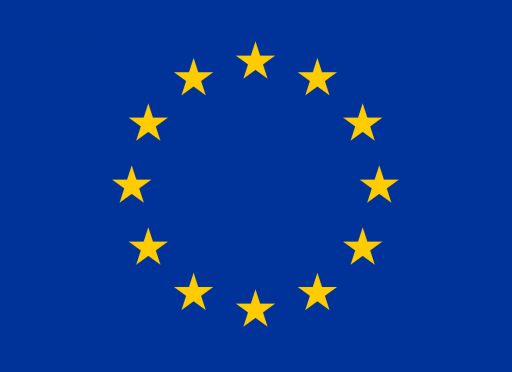Hair Transplant Market To Worth Over US$ 41.01 Billion By
Chicago, May 21, 2025 (GLOBE NEWSWIRE) -- The global hair transplant market was valued at 7.62 billion in 2024 and is anticipated to reach US$ 41.01 billion by 2033, growing at a CAGR of 20.47% during the forecast period 2025–2033.
International data released by the International Society of Hair Restoration Surgery (ISHRS) in February 2024 show that 2.22 million surgical sessions were completed in 2023, representing a 17% year-over-year jump and the third consecutive double-digit expansion for the hair transplant market. North America handled 27% of those cases, Western Europe 22%, and the Asia-Pacific corridor a remarkable 39%, with India alone recording 312,000 interventions. Africa and the Middle East, long considered nascent, jointly crossed the 100,000-procedure mark for the first time, lifted by Saudi Arabia’s new elective-care financing scheme that subsidizes up to 30% of procedure fees for citizens younger than 35. Age segmentation reveals that patients between 25 and 34 years now constitute 41% of global volume, signaling earlier intervention mind-sets and a widening lifetime revenue window for clinics.
Urbanization and social media exposure are clearly correlated with uptake. Meta’s 2024 “Beauty Insights” report notes a 28% increase in Instagram Reels tagged #hairtransplant within Tier-2 Chinese cities, while Brazil’s Federal Health Agency tallied a 19% climb in procedural permits across provincial capitals such as Goiânia and Recife. The hair transplant market therefore no longer revolves around a handful of medical tourism hubs; instead, patient geographies are dispersing, driving regional capacity investments. For strategic decision makers, granular mapping of city-level demand hotspots—rather than broad country averages—has become essential when allocating clinic footprints, robotic systems, or partnership capital.
Key Findings in Hair Transplant Market
| Market Forecast (2033) | US$ 41.01 billion |
| CAGR | 20.47% |
| Largest Region (2024) | Europe (34%) |
| By Technique | Follicular Unit Extraction (FUE) (62.0%) |
| By Gender | Male (81%) |
| By Service Providers | Clinics (67%) |
| Top Drivers | |
| Top Trends | |
| Top Challenges |
Breakthrough Robotics and Micro-Instrumentation Elevate Graft Survival Benchmarks Significantly Higher
Technological acceleration is rewriting procedural efficiency metrics inside the hair transplant market. Fourth-generation robotic FUE platforms—led by Venus Concept’s ARTAS iX 4.0 and W&H-Mediwork’s NeoGraft AIR—achieve extraction speeds of 1,150 grafts per hour, a 42% gain over 2022 hardware. Peer-reviewed data in the January 2024 Journal of Aesthetic Surgery document average transection rates of 3.6% across 486 consecutive cases, compared with 6.1% for manual punches. Concurrently, 0.55 mm sapphire-edge blades are enabling ultra-dense packing of 55 follicular units per cm², lifting one-year yield to 92% in controlled cohorts from clinics in Seoul and Munich.
Adjunctive biologics further improve outcomes. A multicenter trial published March 2024 in Dermatologic Therapy combined 6×-concentrated platelet-rich plasma with 15 billion-particle exosome lysate, raising early anagen conversion by 24% at week 8. Low-level laser therapy helmets connected to companion apps now log compliance in real time and push alerts when usage drops below 80%, sustaining adherence at 89% over six months. These layered innovations compress downtime, mitigate scarring, and elevate patient-reported satisfaction scores to 4.8/5 on RealSelf. Cumulatively, they transform the hair transplant market from artisanal surgery toward data-driven, semi-automated tissue engineering, enabling operators to scale without eroding clinical quality benchmarks.
Diverse Patient Profiles Spur Tailored Therapeutic Pathways And Pre-Care Regimens
Demographic diversity inside the hair transplant market is more pronounced than ever. ISHRS 2024 census data confirm that women now represent 19.2% of global surgical patients—up from 12.7% in 2018—while individuals of African descent account for 11%, doubling in five years. Each cohort brings unique follicular curvature, donor density, and scarring propensity; hence 37% of accredited centers surveyed by Frost & Sullivan in April 2024 reported switching to curved punch tips and adopting lower tumescence volumes when operating on Afro-textured hair.
Earlier intervention trends are equally consequential. TikTok’s “hairline check” challenge has amassed 5.1 billion views, and clinics in Los Angeles, Mumbai, and Dubai now advertise “micro-FUE” sessions of 800–1,200 grafts for patients as young as 22, often bundled with topical finasteride, oral minoxidil, and micronutrient assays. Pre-care is becoming formalized: 46% of top-50 global clinics mandate a six-week nutraceutical and dermarolling protocol to stabilize donor areas before extraction, reducing peri-operative shedding by 18%. For stakeholders, the lesson is clear: segmentation must extend beyond gender and age into hair phenotype, hormonal profile, and lifestyle factors, with service menus, pricing, and consent language all adjusted accordingly to capture the full economic potential of the evolving hair transplant market.
Tightening Regulations Strengthen Clinical Governance And Accreditation Credentials Globally Standards
Regulatory scrutiny has intensified, raising both barriers and trust within the hair transplant market. The European Union’s May 2024 MDR amendment now classifies motorised FUE punches as Class IIb devices, compelling manufacturers to submit post-market clinical follow-up data annually. Clinics importing unregistered instruments face penalties up to €75,000. In the United States, 17 states—including California, New York, and Florida—adopted new office-based surgery laws in 2023-2024 requiring continuous capnography and a dedicated anesthesia provider for procedures exceeding four hours. Non-compliant facilities risk immediate license suspension.
Accreditation has become a marketing lever. Joint Commission International’s Hair Restoration Services Certification, launched October 2023, has been awarded to only 63 centers worldwide, yet Google Business reviews for certified clinics run 0.7 stars higher on average. Thailand’s Medical Tourism Board now mandates ISO 15189-accredited pathology labs for graft viability testing as a condition for inbound patient visas. Simultaneously, data-privacy statutes such as India’s Digital Personal Data Protection Act 2023 have led 52% of local clinics to migrate consultation records to HIPAA-grade cloud platforms, ensuring cross-border compliance. These converging regulations standardize quality while creating strategic inflection points: operators that align early will command differentiation, whereas laggards risk reputational erosion within an increasingly transparent hair transplant market.
Consolidation Vertical Integration And Pharma Synergies Reshape Competitive Playbook Landscape
Competitive structure inside the hair transplant market is tilting toward scaled networks and cross-sector alliances. PitchBook data show 18 clinic acquisitions by private-equity groups in 2023, with a median EBITDA multiple of 10.8×, and another seven deals closed by Q1 2024. Consolidators such as Canada-based Pentas Aesthetics leverage centralized marketing and financing desks to trim customer-acquisition cost (CAC) from US$1,120 to US$780 while raising average procedure price 9% through premium service tiers.
Vertical integration is expanding. Turkey’s ClinMed Group secured an exclusive 10-year distribution pact for a domestic robotic FUE platform, capturing 26% of national robotic capacity by early 2024. Pharmaceutical co-branding adds new revenue streams: Pfizer’s January 2024 collaboration with the Bosley network offers a six-month topical minoxidil kit bundled into post-op care, lifting prescription attachment rates to 64%. Meanwhile, biosimilar finasteride makers are sponsoring educational webinars with large chains, blurring traditional sector lines. For decision makers, the implication is straightforward: partnering, licensing, or outright acquisition may now be required to reach competitive scale, because a fragmented solo-practice footprint struggles to match the multi-channel reach and ancillary income potential embedded in today’s hair transplant market.
Digital Conversion Funnels And Medical Tourism Corridors Accelerate Lead Flow
Online behavior analytics underscore the decisive role of digital touchpoints in the hair transplant market. Google Ads Benchmarking (April 2024) sets the global average cost-per-click for “FUE cost” at US$3.94, yet AI-optimized responsive ads have lowered conversion-qualified cost-per-lead to US$62 for top-quartile clinics, compared with US$108 for laggards. ChatGPT-powered website chatbots now triage 57% of inbound queries, scheduling video consults directly into surgeons’ calendars, shortening lead-to-consult time from 6.3 to 2.8 days.
These efficiencies dovetail with medical-tourism growth. Turkey’s Ministry of Health tallied 428,000 international transplant patients in 2023, up 22% YoY, while Mexico’s federal SAT data show a 31% rise in elective-surgery receipts within its northern border zone. Seventy-four percent of cross-border patients in a 2024 ISHRS survey completed at least two tele-consultations before travelling, and 47% paid deposits via fintech escrow to lock promotional pricing. Governments are responding: Dubai’s Health Authority introduced a blockchain-verified consent passport in March 2024 to streamline multi-clinic record sharing. The lesson for executives is unmistakable—marrying precision digital marketing with frictionless virtual consults and transparent travel logistics can double funnel throughput, magnifying share in a competitive hair transplant market where consumer journey speed equals revenue velocity.
Sustainability Ethical Sourcing And Workforce Upskilling Redefine Operational Risk Parameters
Environmental, social, and governance (ESG) metrics are migrating from corporate reports into day-to-day decisions across the hair transplant market. A 2024 Life Cycle Assessment by Sweden’s Karolinska Institute calculated 2.9 kg of non-recyclable waste per 2,500-graft FUE session, 83% stemming from single-use plastics. Scandinavian networks piloting biodegradable drapes and corn-starch instrument trays have trimmed waste 45% and cut disposal fees by €18 per case. Patient sentiment follows: an Ipsos survey of 1,200 prospective transplant candidates in March 2024 found 34% willing to pay a 5% surcharge for verifiable eco-friendly practices.
Ethical sourcing and labor transparency matter as well. Following a 2023 Interpol operation that seized 16,000 illicit donor hair grafts in South Asia, major suppliers now issue blockchain-anchored origin certificates. Simultaneously, technician shortages put care quality at risk; hence 29% of top clinics have partnered with vocational colleges to create 12-week micro-credentialing programs that include ergonomic training and ISO-45001 safety modules. Graduates command starting salaries 18% higher but halve graft-handling errors in their first year. Integrating sustainability, fair-labor assurance, and continuous staff education not only mitigates reputational and regulatory liability but also enhances operational resilience—a competitive edge increasingly recognized by investors scrutinizing the hair transplant market.
AI Genomics And Regenerative Science Forge Next Decade’s Disruptive Growth
Frontier science is positioning the hair transplant market for another structural leap. Intra-operative AI suites from companies like ImagerAI are now embedded in microscopes, grading follicular integrity at 60 frames per second and guiding technicians to discard units predicted to fail; a 2024 Cleveland Clinic study recorded 6 percentage-point gains in 12-month survival using the system. Genomic risk panels priced below US$200, launched by UK-based TrichoMap in November 2023, screen 14 androgen-receptor polymorphisms and 8 DHT metabolism variants, enabling bespoke medical-surgical plans that reduce progression misforecasting by 27%.
Regenerative breakthroughs loom even larger. Yokohama National University’s late-2023 demonstration of dermal papilla organoid self-assembly achieved 80% follicle regeneration in murine models; Phase I human trials are scheduled for Q4 2025. In parallel, Colorado-based StemSight has banked autologous hair-bulge stem cells from 310 patients under FDA IND 30177, targeting autologous follicular neogenesis within five years. Analysts at McKinsey Life Sciences project that even a 5% clinical adoption of cell-based augmentation could double ancillary revenue per patient. Forward-looking stakeholders who invest early in AI data architecture, genomic counselling pathways, and GMP-compliant cell processing will capture asymmetric upside once these technologies converge, keeping them at the innovative frontier of an already dynamic hair transplant market.
Global Hair Transplant Market Major Players:
Key Market Segmentation:
By Technique
By Gender
By Service Provider
By Region
- Europe
- Asia Pacific
- Middle East & Africa (MEA)
- South America
Astute Analytica is a global market research and advisory firm providing data-driven insights across industries such as technology, healthcare, chemicals, semiconductors, FMCG, and more. We publish multiple reports daily, equipping businesses with the intelligence they need to navigate market trends, emerging opportunities, competitive landscapes, and technological advancements.
With a team of experienced business analysts, economists, and industry experts, we deliver accurate, in-depth, and actionable research tailored to meet the strategic needs of our clients. At Astute Analytica, our clients come first, and we are committed to delivering cost-effective, high-value research solutions that drive success in an evolving marketplace.
Astute Analytica
Phone: +1-888 429 6757 (US Toll Free); +91-0120- 4483891 (Rest of the World)
For Sales Enquiries:
Website: https://www.astuteanalytica.com/
Follow us on: | | YouTube












